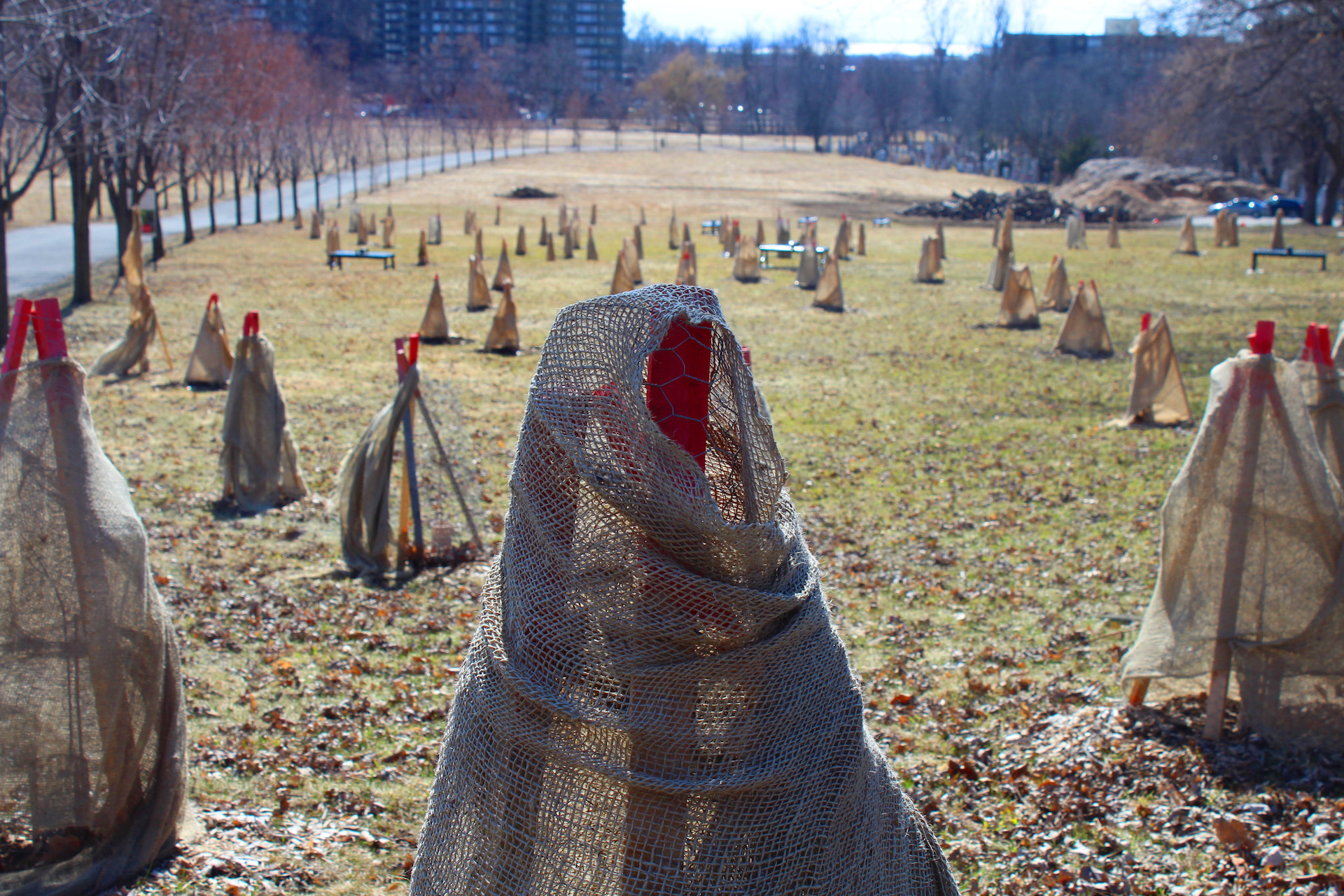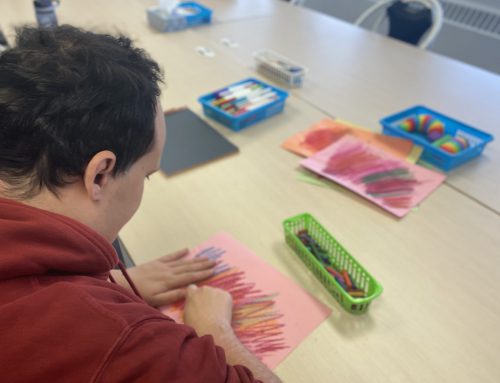BY Iness Rifay & Mackenzie Sanche
Elizabeth Anne Kinsella’s family was surprised when she first approached them about her death and wanting her body to naturally decompose into the earth.
“It wasn’t important to me to be preserved for people to visit my headstone, or for my ashes to be spread in different parts of the world,” Kinsella says. “I realized that what is far more important is the environmental footprint that I leave with my death.”
As she dug further into the matter, Kinsella felt more and more that modern burial practices were too far removed from the natural death process.
“Why have we humans decided to intervene with the natural process of decomposition of bodies? Have we made this process more complicated, and more toxic, than it needs to be?” she asks. “What if as a culture we were to view death as a natural process, what would be the implications for how we approach end of life?”
These questions led Kinsella to discover green burials.
In Montreal, there is one place offering this service: the Notre-Dame-des-Neiges (NDDN) cemetery. It specializes more specifically on biodegradable urns.
NDDN customer service director Éric Choinière still remembers the first ever person to seek out a green burial with the NDDN cemetery, back in 2021.
“She came all the way from Venezuela,” he recalls. “She was dying from cancer. It was her wish to be buried under Canada’s maple leaf, and so we buried her under a maple tree.”
The tree still stands in NDDN’s Remembrance Grove. The cemetery’s green burial initiative was launched in 2021.
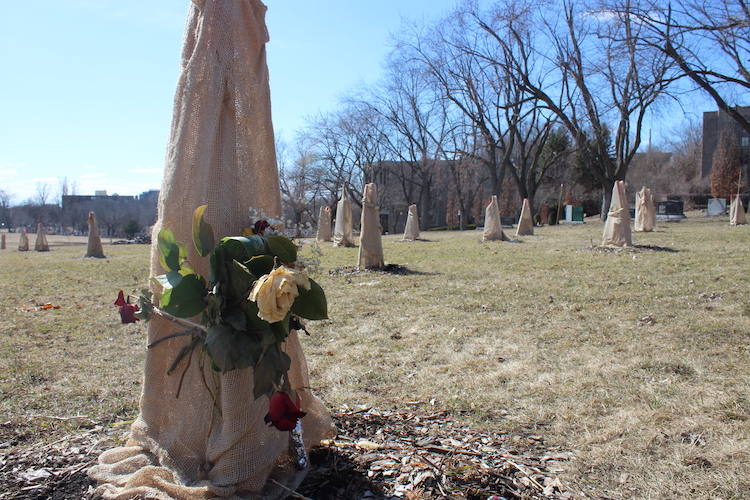
One of the trees in Remembrance Grove. The Remembrance Grove in NDDN is full of young trees, all veiled in a protective shroud to protect them from storms, cold weather and other harsh climate conditions. Later in the spring and summer, the shrouds will be removed. Photo by Iness Rifay.
“When we first did a marketing campaign for the grove, a lot of people came to us and said that they had been waiting for something like this,” says Choinière. “Some had been holding their loved ones’ ashes at home, and were really happy to see the service come to Montreal.”
The project came to life following a survey of the cemetery’s clientele. Over 80 per cent of respondents were open to transforming the cemetery into a space fostering native flora, as well as expanding on existing wooded areas by planting commemorative trees instead of monuments and gravestones.
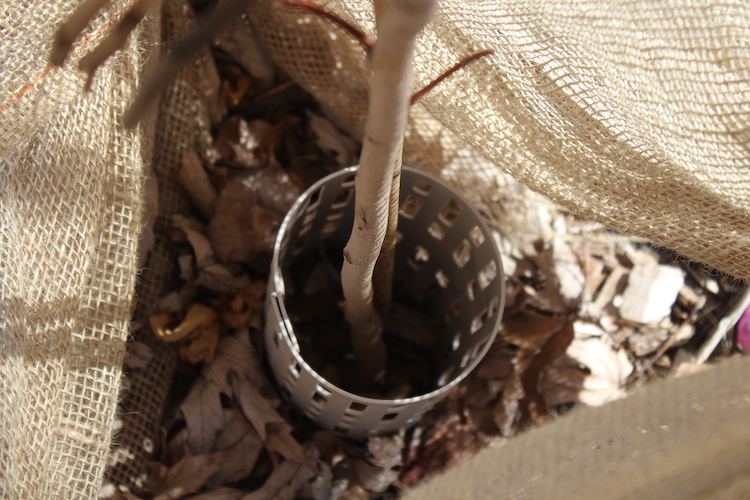
A closeup of the tree’s growth. When planning for such a burial at the NDDN, people have the freedom to choose between various trees, such as maple, hickory, and chokecherry, amongst others. Photo by Iness Rifay.
Remembrance Grove encapsulates over 165,000 square feet, enough space for 2,000 trees. Along with their second grove, over 300 urns currently sit underneath young trees.
“Three hundred trees, 300 different stories,” says Choinière. “Stories of people who liked to go in the woods, in the mountains, and who wanted to return to nature.”
The NDDN is limited to using ashes and soil for the burials, as opposed to full-body green burials–wrapped in a shroud made of natural, biodegradable fibers, and buried directly in the ground—as Quebec does not currently allow it. The province’s burial act states that a body must be buried in a coffin and covered with at least one meter of earth. The section has not been updated in nearly 40 years.
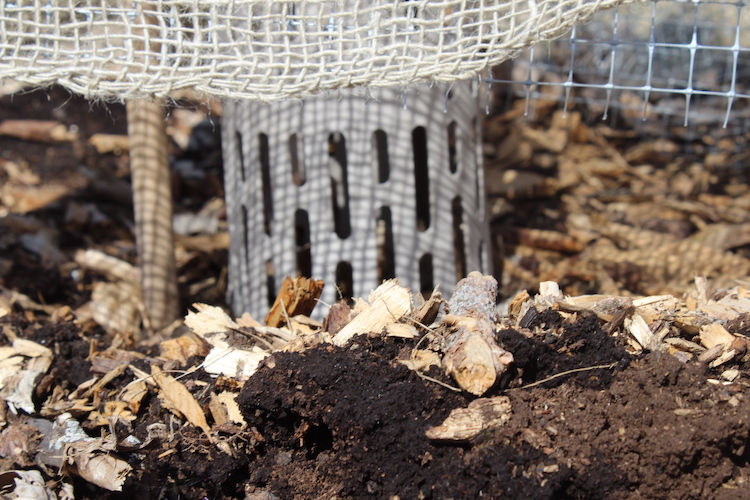
A closer look at the soil underneath the trees. Before burial, the ashes of the deceased are mixed with soil and carefully planted underneath the tree, which is then maintained regularly until it can grow independently. Photo by Iness Rifay.
NDDN’s initiative is also the only one of its kind in the city. As of 2022, Quebec only has three cemeteries and spaces with green urn burial options. The other two are located in Prévost and Granby. In comparison, British Columbia has 10, and Ontario has 12—some of which include full-body green burials. The remaining provinces do not hold more than Quebec.
The other available green burial methods in Quebec are aquamation and human composting, with one funeral home in Quebec offering the former. The latter is provided by an American company, Return Home.
Aquamation immerses the dead body in a mixture of water and a powerful alkali, after which it is pressurized and heated at high temperatures for a few hours. The body is liquefied.
Human composting, also known as terramation, combines natural materials such as straw, alfalfa and sawdust with the body. The lot turns into soil after two months.
Map of recognized green burial initiatives around Canada as of 2022. Media by Iness Rifay.
Mark Shelvock is a thanatologist, a person that studies death. He says the lack of attention paid to green burials by provincial governments is related to how isolated death practices have become. He adds that green burials were the norm prior to the modern era.
“People typically die within social and health institutions now such as ICU units, palliative care units, hospice, long term care, etc., instead of home or religious settings, which could support green death practices more easily if the community handled death processes,” says Shelvock.
Beyond legislation, Shelvock also elaborated on how the lack of general conversation on death renders the topic to remain untouched.
“Death itself remains taboo, marginalised [and] medicalized,” says Shelvock. “Future generations would significantly benefit if the human beings of today can become more curious about how to honour our loved ones, ourselves, and our Earth simultaneously through death practices.”
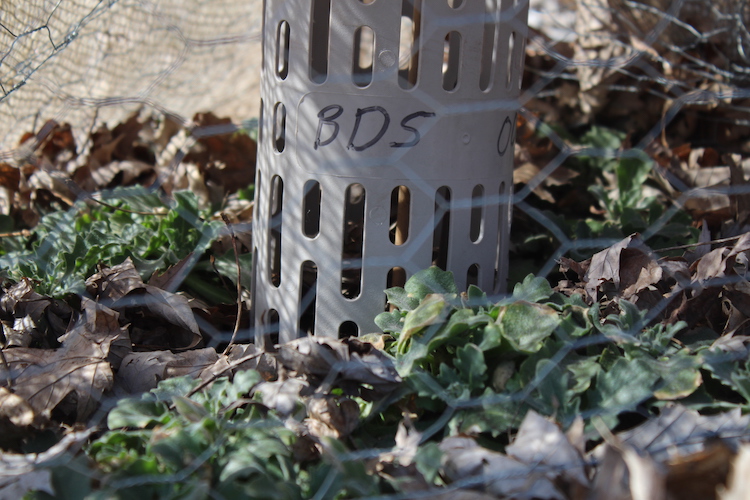
The label on one of the tree’s protective shells. The trees in Remembrance Grove aren’t labeled by names, but by numbers. Instead, each number is engraved in a commemorative monument at the front of the grove, alongside the names of the respective person buried underneath. Photo by Iness Rifay.
Shelvock’s research found that mainstream casket and coffin burials, with embalming, as well as cremation, release highly dangerous toxins to both human and wildlife in earth and water ecosystems. Exposure to chemicals like mercury, formaldehyde, and phenol carries an increased cancer-risk to embalmers, funeral directors, pathologists and anatomists who work on dead bodies. While embalming is not a legal requirement, it is practised in Quebec for open-casket burials, if the body will not be buried within 72 hours of their death.
According to the Quebec Burial Act, caskets must be buried with stone, brick and cement lining, which can also cause additional damage to the ecosystem as well as hinder decomposition.
While new green burial-focused cemeteries can help spearhead an industry-wide shift towards more ecological processes, some believe existing cemeteries should also be challenged in their practices. Others, however, find their maintenance to be equally as important, as gravestones, for instance, can carry traces of descendents’ pasts.
Locals team up to restore cemeteries and preserve their historical heritage. Video by Mackenzie Sanche.
“Is it true that you need a grave-liner, or that bodies need to be buried in these ways?” asks Catherine Valentine, the treasurer of the Green Burial Society of Canada. “We need to challenge existing bylaws, and get green burial people on the boards of funeral homes.”
The Green Burial Society is currently collaborating with the Funeral Service Association of Canada to implement three-hour courses to train upcoming funeral directors in green burial methods. They will also be able to obtain certification that goes beyond a cemetery’s green burial label.
“For example, a dead body is going to need a diaper, because they leak,” says Valentine. “When that body is brought to a green burial site, the funeral director needs to adapt their practices. It cannot go in with that diaper.”
Like Shelvock, Valentine attributes the lack of awareness on green burials to how the topic of burial practices is approached in general.
“The best way to break the ice is to talk through it and get the news on it,” she says. “People will then trust it’s a legitimate option for them. Then, all it will take is a few selfless and dedicated people who are committed to get green burials going.”
Valentine also urged the importance of giving people environmental options when navigating burial methods.
“They’re especially important as a means to protect and conserve land. A regular cemetery may look taken care of, but under the earth, it’s full of unsustainable material,” she says.
When it comes to the emotional importance of a burial, grief therapist Natalie Segall finds access to a green burial might be more complicated.
On some occasions, dying people may not get to choose their burial options due to family decisions. As a result, she thinks advocacy for green burials to be helpful. “Ultimately, more power and more choice into the dying’s hands is very important, as it grants them flexibility. If a green burial can help the grieving process along, it should definitely be offered up as much as any other option.”
Since Segal discovered the possibility of green burials, she says she would promote green burial methods to the clients who request advice, along with mention of the other ways.
“How beautiful is it to go and see a tree that’s going to be there forever, especially if it’s someone that we lost? They’ll be there for centuries, and I find that very comforting.”
Kinsella believes that, as green burial awareness increases slowly but steadily, perceptions and discussions on death practices near a revolutionary shift toward green burials for the future.
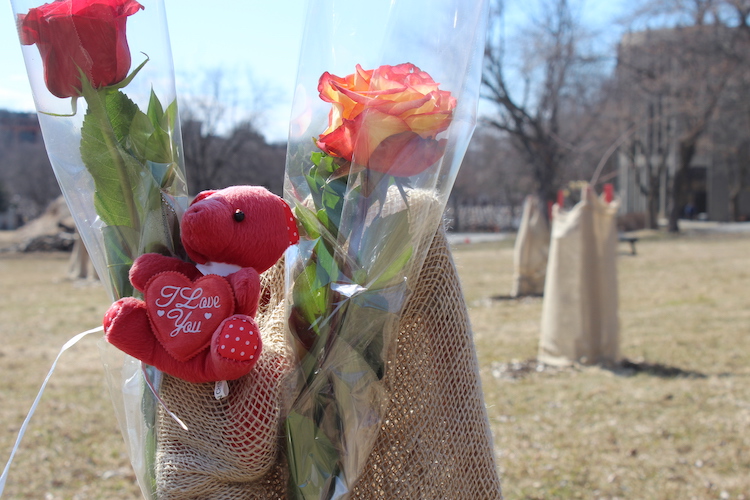
A teddy bear and flowers set on one of the trees in Remembrance Grove. Many trees in the grove held various gifts, such as bird and butterfly charms, either found sitting in the soil or clipped into the veil. Photo by Iness Rifay.
“My thoughts are that family members can remember a loved one in many ways: they can plant a tree, frame a picture, write a poem, listen to a favourite shared song, or simply carry someone in their heart, or another manner of remembrance,” Kinsella says. “There are so many ways to be creative about remembrance beyond visiting an embalmed body in a cemetery or keeping ashes in a jar.”
